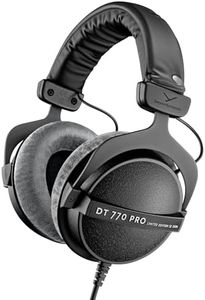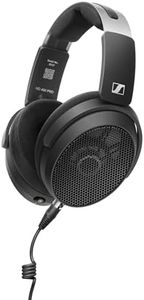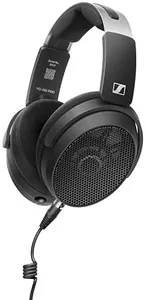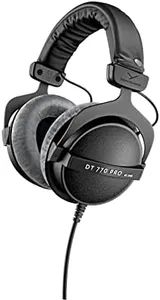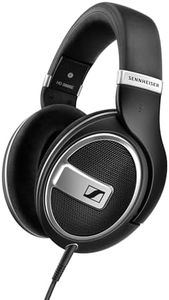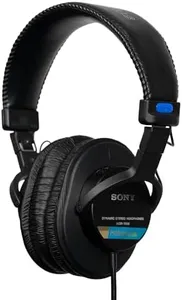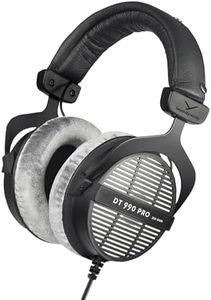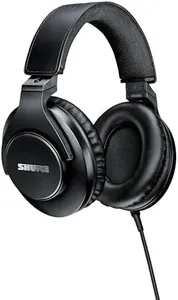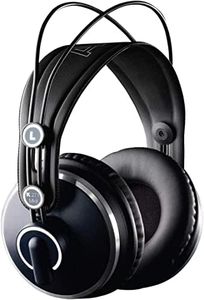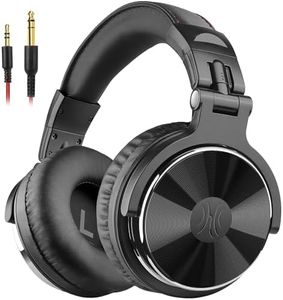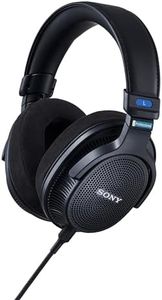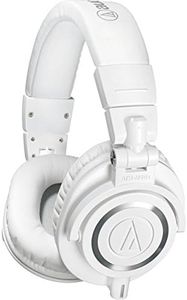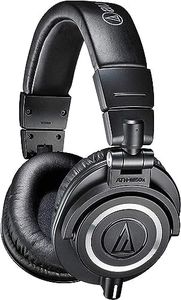We Use CookiesWe use cookies to enhance the security, performance,
functionality and for analytical and promotional activities. By continuing to browse this site you
are agreeing to our privacy policy
10 Best Studio Headphones For Mixing And Mastering
From leading brands and best sellers available on the web.Buying Guide for the Best Studio Headphones For Mixing And Mastering
Choosing the right studio headphones for mixing and mastering is crucial for anyone involved in music production, whether you’re an amateur or a professional. The headphones you pick will greatly influence your ability to hear details, correct mistakes, and ensure your final mix sounds good on any speaker system. It’s important to focus on how accurately the headphones represent sound, their comfort for long sessions, and whether their build fits your working environment.Sound Signature / Frequency ResponseFrequency response describes how headphones reproduce sounds of different pitches, from the deepest bass to the brightest highs. For mixing and mastering, a 'flat' or neutral sound signature is essential because it presents the music as it truly is, without boosting or cutting any frequencies. This honesty helps you catch imperfections and produce a balanced mix. Headphones often come described as ‘flat’ (neutral and ideal for critical listening), ‘V-shaped’ (boosted bass and treble, less suited for mixing), or ‘bass-heavy’ (great for enjoyment, but hides mistakes). If you want accuracy, always choose those marketed for a flat or neutral response.
Open-back vs Closed-back DesignThis spec refers to whether the ear cups have vents (open-back) or are sealed (closed-back). Open-back headphones allow air and sound to flow through, providing a more natural and spacious sound—perfect for mixing and mastering because of increased detail and a sense of space. However, they leak sound and won’t block outside noise. Closed-back headphones provide isolation and privacy, making them better for tracking vocals and instruments, or working in noisy spaces, but they can sound less natural. If you work in a quiet studio, open-back is your best bet for mixing, while closed-back makes sense for noisy environments or recording.
Comfort and Build QualityComfort is fundamental during long mixing or mastering sessions. Look for headphones with padded headbands, soft ear pads, and an adjustable fit. Also, lightweight materials help reduce fatigue. Good build quality ensures durability, especially if you’ll be using them daily, taking them on-the-go, or adjusting them often. If you plan on wearing them for hours, prioritize models that are known for comfort and robust construction.
Impedance and SensitivityImpedance, measured in ohms (Ω), affects how much power your headphones need. High-impedance headphones (over 100Ω) usually require dedicated headphone amps to reach full potential, often delivering cleaner, more controlled sound. Low-impedance models (under 50Ω) work well with standard devices like laptops or audio interfaces without extra equipment. Sensitivity affects how loud headphones will get given the same input. If you have a studio setup with a proper headphone amp, high-impedance is ideal; otherwise, stick with lower impedance for compatibility.
Cable Type and LengthCable type (straight or coiled) and length affect your mobility while working. Coiled cables stretch for movement and retract neatly, while straight cables are lighter and tangle less. Removable cables add convenience for replacements or upgrades. Depending on your studio setup and how much you move around, pick a cable type and length that lets you work without fuss.

